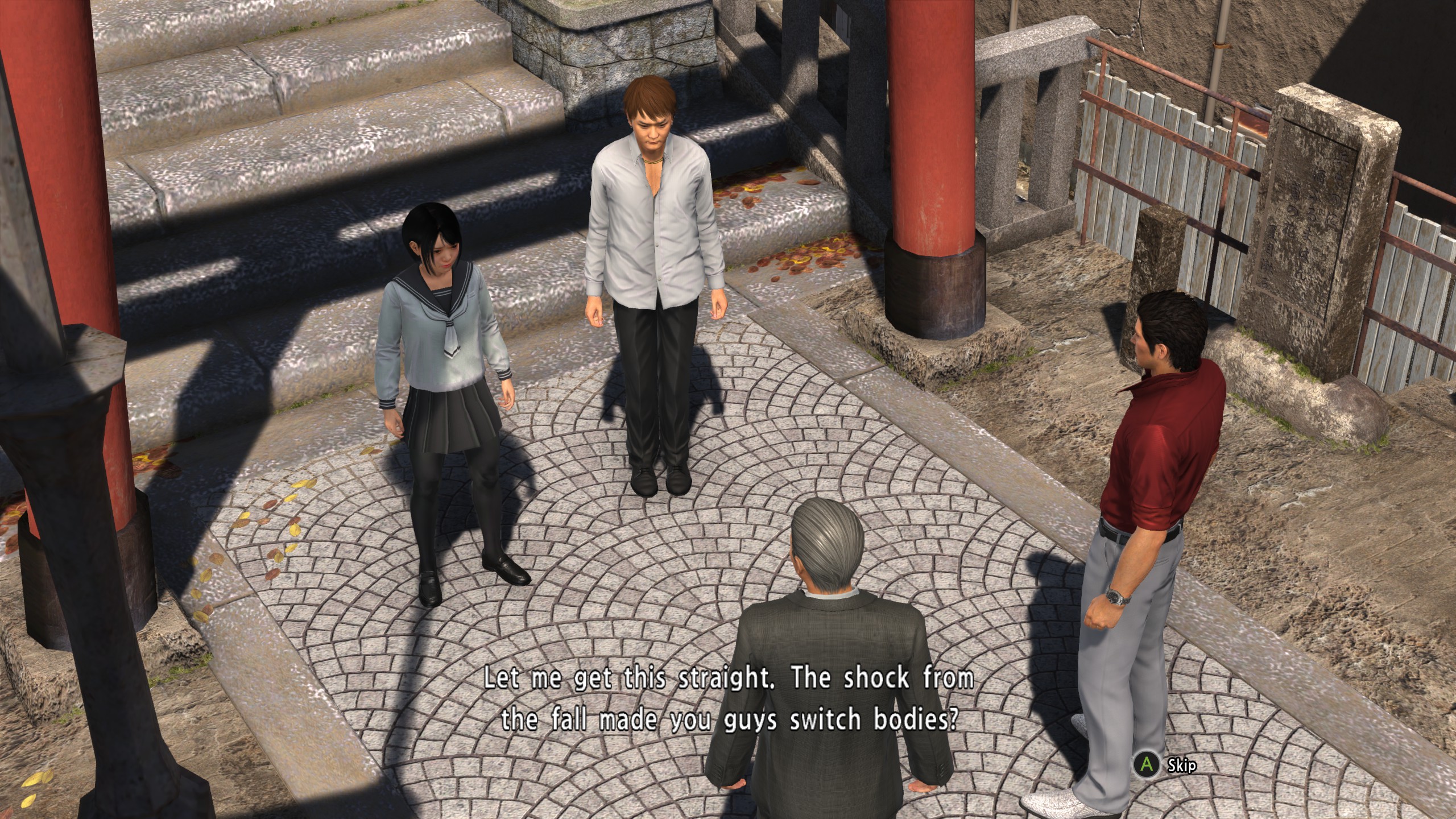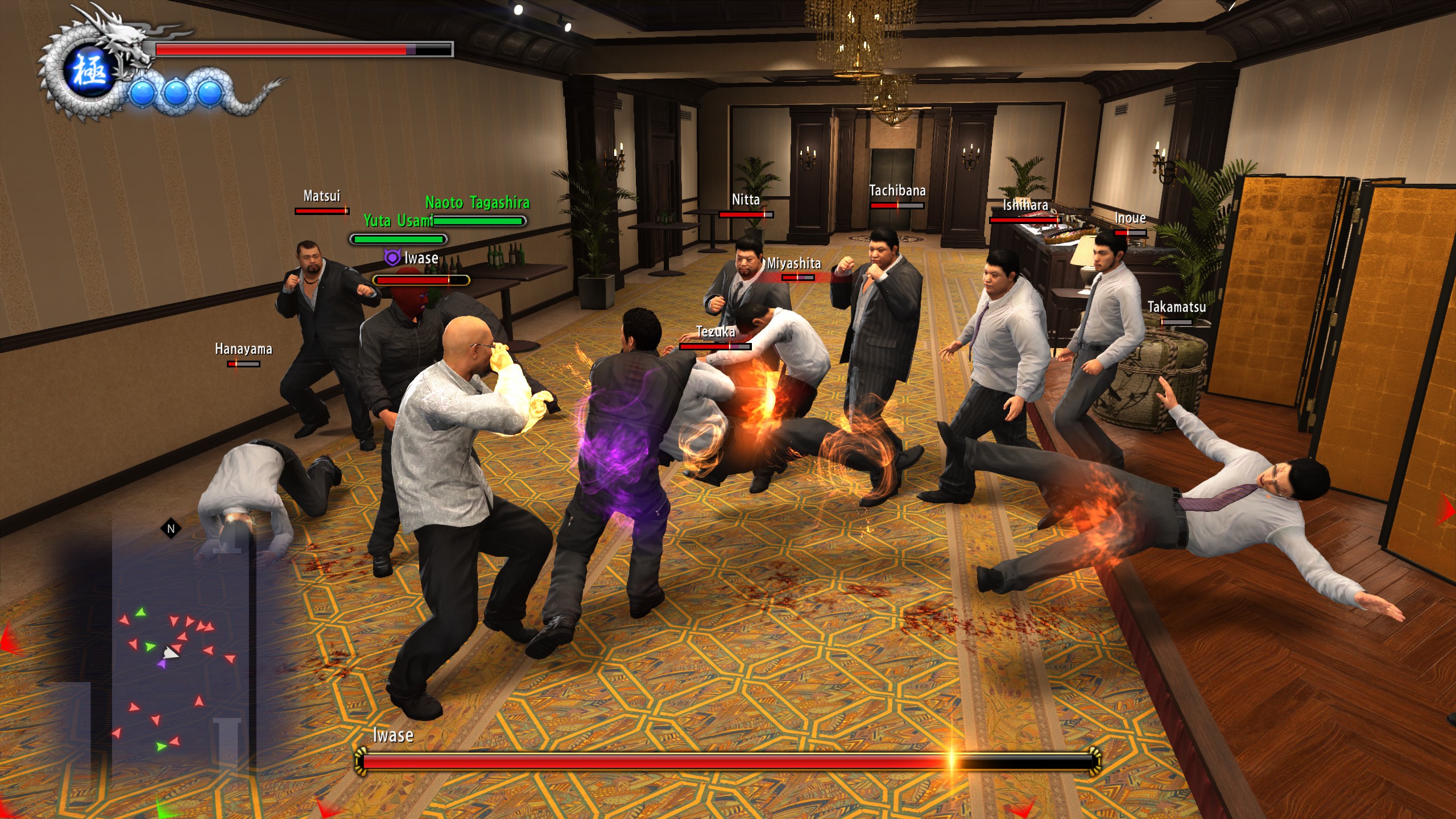Our Verdict
The setting of Onomichi proves that the long-running series still has some tricks, making Yakuza 6 a worthy finale for its main protagonist.
PC Gamer's got your back
What is it? The seventh Yakuza game, set before Like a Dragon in the chronology.
Expect to pay $20/£15
Developer RGG Studio
Publisher Sega
Reviewed on GeForce GTX 1070, 32GB RAM, Ryzen 7 3700X
Multiplayer? Yes, for minigames
Link Official site
One of the peculiarities of Sega's PC port release schedule—releasing the series (almost) chronologically, rather than in the order they were made—is it lessens the original impact that Yakuza 6 once had. It's no longer a showcase for the new Dragon engine, because Yakuza Kiwami 2 exists and does that better. And it's not as experimental or new as Yakuza: Like a Dragon, which features turn-based combat and a different protagonist—making it a fine jumping on point for anyone looking to skip ahead to the very latest in the series.
That means there are a lot of reasons not to play Yakuza 6, at least not yet. On PC, the entire series has released at a relatively breakneck pace, with the remasters of Yakuza 3-5 all arriving at the beginning of this year. Have you played Yakuza 5? You should: it's wild, arguably the most ambitious the series has ever been, and delightful as a result. Have you played Yakuza 4? It's not my favourite, but it introduces a handful of characters that have a major presence in subsequent games. Have you played Yakuza 3? To be honest, you can probably get away with skipping that one.
Yakuza 6, then, is Kazama Kiryu's final game as protagonist—the end of a story that has played out over hundreds of hours across six previous games. And while each game throws up a different central antagonist, ensuring the immediate threat is always somewhat standalone, the series' connective tissue has always been the relationships that Kiryu has forged along the way.

All of which is to say, if you're new to the series—or have only dipped your toe into a handful of them over the years—come back to this one later, when you've fallen a bit deeper down the rabbit hole.
After an in media res opening to set the tone, you're treated to a lengthy sequence that follows on directly from Yakuza 5's semi-cliffhanger ending. A lot of the opening hours are spent slowly moving the pieces into place—dealing with the fallout and ramifications of Yakuza 5, and getting characters ready for the drama of the finale. The upshot is this: Kiryu, arrives in Onomichi—a declining port city in Hiroshima—with a baby in tow.
While you'll still spend plenty of time in Kamurocho—both in the story and as the de facto hub for minigames—Onomichi is both the heart of Yakuza 6, and a statement of intent. Where Kamurocho has karaoke, old Sega arcade machines, a cat cafe and a new gym that lets you train your skills, Onomichi is smaller, quieter and more rural. It's a close knit community that Kiryu has to work hard to crack, and is sparse with its distractions. An entire chapter of the story is dedicated to Kiryu's search for baby formula, because all of the shops have closed. It's that kind of town.
When Yakuza 6 gives its characters room to reflect, it's often a triumph
So while there are plenty of reasons why those who haven't played the full series should avoid Yakuza 6 for now, Onomichi is why they should make sure to come back to it eventually. Its prominence sets Yakuza 6 apart from its predecessors, offering a change of pace that gels well with the story being told. As Kiryu works to enamour himself to the locals, he falls in with a small-time Yakuza family—a loveable bunch of losers whose hearts are nevertheless in the right place. It's a reprise of Yakuza 3's setup, but one that offers a contrast to the destructive political dealings of the clans that threaten to once again tear down everything Kiryu cares about.

At first it seems strange that so much of the series has focused on Tojo Clan heads like Majima, Saejima and Daigo, only for them to be almost completely absent for the finale, but this lets the story focus on the values that Kiryu will fight to protect, and the civilian relationships that ultimately mean more to him than his former allies. There's plenty that doesn't land, of course: giant, absurd twists and convoluted contrivances that are the hallmark of the series. And the conclusion doesn't entirely work for me, but when Yakuza 6 gives its characters room to reflect, it's often a triumph.
It's also incredibly silly in lots of fun ways. Onomichi's substories feature parodies of Freaky Friday and The Girl Who Leapt Through Time, and a delightful sequence introducing Onomichi's new mascot. Kamurocho, meanwhile, continues the ongoing series trend of Kiryu as a dinosaur in a technological age. It's broad, unsubtle satire, but the escalation of absurdity remains a joy. I particularly loved one of Onomichi's stand-out side chains involving some ludicrously gamified pub banter.
As the first Dragon Engine game, Yakuza 6 does have some compromises. Its version of Kamurocho isn't as fully formed as in Kiwami 2 or the PlayStation exclusive Judgement, with sections of the city closed off. And I never quite gelled with the combat. Rather than Yakuza 0's crisp, clean encounters, here the animations are more fluid, yes, but sluggish as a result. I've seen speculation that it's a deliberate attempt to depict Kiryu's advancing age—possibly supported by how much it's improved in Kiwami 2—but the upshot is it's a game about fighting that never feels as satisfying as its predecessors.

Yakuza 6, does, at least, get a big performance update on PC, with uncapped framerates providing a nice upgrade over the PS4 version. I was a little worried early on, when Kiryu's luggage started jiggling uncontrollably in that way that suggests the physics had been hardcoded to a now-unleashed framerate, but otherwise it all seemed to work as intended.
Even playing on an increasingly aging GTX 1070 graphics card at near-maximum settings on 1440p, it held consistent at around 60fps. And while Yakuza has never exactly been the prettiest series, the Dragon Engine games continue to look great with incredibly detailed faces and animations (at least for those characters deemed important enough to bother with). That said, the subtitles are still slightly too low-res, with noticeable aliasing. It's a minor problem, but an ongoing one.
The broad strokes of every Yakuza game are the same: a story that runs the gamut from hard-boiled mystery to interpersonal drama, a suite of ridiculous substories that almost always end with punching a guy into having a heartwarming revelation, a handful of minigames and side stories, all tied together with a likeable protagonist able to withstand the tonal shifts. The difference between each comes down to a handful of things: the plot, the themes, the surprising new distractions, the feel of the destinations. Yakuza 6 isn't the best game in the series, but it's nonetheless a deserving part of it, and well worth playing… at least when you're ready.
The setting of Onomichi proves that the long-running series still has some tricks, making Yakuza 6 a worthy finale for its main protagonist.

Phil has been writing for PC Gamer for nearly a decade, starting out as a freelance writer covering everything from free games to MMOs. He eventually joined full-time as a news writer, before moving to the magazine to review immersive sims, RPGs and Hitman games. Now he leads PC Gamer's UK team, but still sometimes finds the time to write about his ongoing obsessions with Destiny 2, GTA Online and Apex Legends. When he's not levelling up battle passes, he's checking out the latest tactics game or dipping back into Guild Wars 2. He's largely responsible for the whole Tub Geralt thing, but still isn't sorry.


